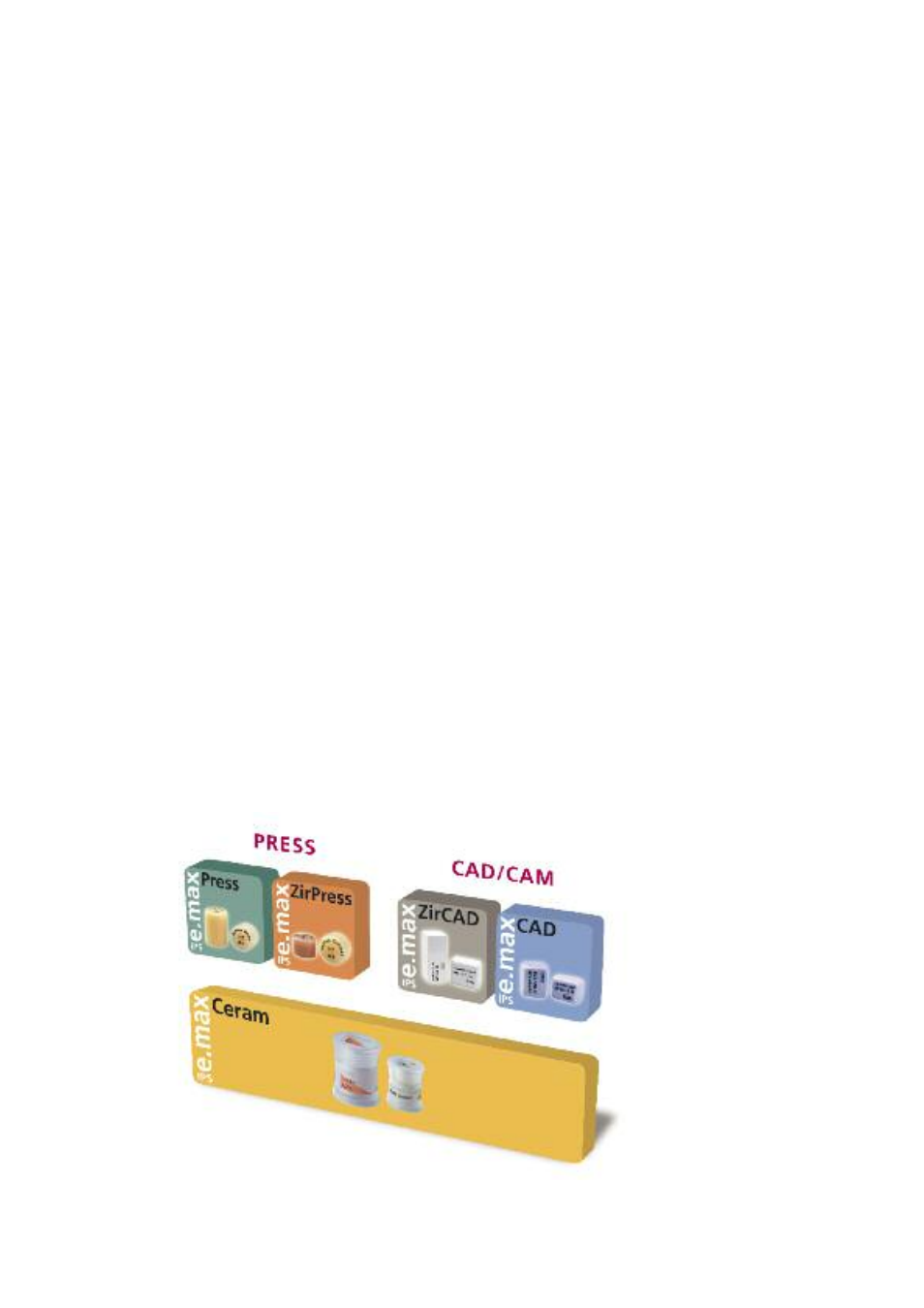E.max, System all you need – Ivoclar Vivadent IPS e.max ZirPress User Manual
Page 3

3
e.max
®
System
all you need
IP
S
IPS e.max – one system for every indication
IPS e.max is an innovative all-ceramic system which covers the entire all-ceramic indication range – from
Thin Veneers to 12-unit bridges.
IPS e.max delivers high-strength and highly esthetic materials for the Press and the CAD/CAM
technologies. The system consists of innovative lithium disilicate glass-ceramics used mainly for single-
tooth restorations and high-strength zirconium oxide for large-span bridges.
Every patient situation presents its own requirements and objectives. IPS e.max meets these requirements,
because due to the system components you obtain exactly what you need.
– The components for the Press technology include the highly esthetic IPS e.max Press lithium disilicate
glass-ceramic ingots and the IPS e.max ZirPress fluorapatite glass-ceramic ingots for the fast and
efficient press-on-zirconia technique.
– Depending on the case requirements, two types of materials are available for the CAD/CAM
technique: the innovative IPS e.max CAD lithium disilicate glass-ceramic blocks and the IPS e.max
ZirCAD high-strength zirconium oxide.
– The nano-fluorapatite layering ceramic IPS e.max Ceram, which is used to characterize/veneer all
IPS e.max components – glass or oxide ceramics –, complete the IPS e.max System.
IPS e.max ZirPress
The shades and translucency levels of the IPS e.max ZirPress ingots are based on the overarching
IPS e.max shade system. The system has a flexible design and can be used in conjunction with the A–D,
Chromascop as well as Bleach BL shade guides.
The shades of the Press ingots and CAD/CAM blocks offered in the IPS e.max System are all coordinated
with each other. They are available in different degrees of opacity and/or translucency. The selection of
the translucency level is based on the clinical requirements (shade of the prepared tooth, desired tooth
shade) presented by the patient, as well as the desired processing technique (layering, cut-back, staining
technique).
The more opaque MO ingots are predominantly suitable for the layering technique, while the more
translucent LT and HT ingots are used for the cut-back and also the staining technique.
